Dolby Digital, originally synonymous with Dolby AC-3, is the name for a family of audio compression technologies developed by Dolby Laboratories. Called Dolby Stereo Digital until 1995, it is lossy compression. The first use of Dolby Digital was to provide digital sound in cinemas from 35 mm film prints. It has since also been used for TV broadcast, radio broadcast via satellite, digital video streaming, DVDs, Blu-ray discs and game consoles.

DVD-Audio is a digital format for delivering high-fidelity audio content on a DVD. DVD-Audio uses most of the storage on the disc for high-quality audio and is not intended to be a video delivery format.
Video game music (VGM) is the soundtrack that accompanies video games. Early video game music was once limited to sounds of early sound chips, such as programmable sound generators (PSG) or FM synthesis chips. These limitations have led to the style of music known as chiptune, which became the sound of the first video games.
Dolby Pro Logic is a surround sound processing technology developed by Dolby Laboratories, designed to decode soundtracks encoded with Dolby Surround. The terms Dolby Stereo and LtRt are also used to describe soundtracks that are encoded using this technique.

New Adventures in Hi-Fi is the tenth studio album by the American alternative rock band R.E.M. It was their fifth major-label release for Warner Bros. Records, released on September 9, 1996, in Europe and Australia, and the following day in the United States. New Adventures in Hi-Fi was the last album recorded with founding member Bill Berry, original manager Jefferson Holt, and long-time producer Scott Litt. The members of R.E.M. consider the recorded album representative of the band at their peak, and fans generally regard it as the band's last great record before a perceived artistic decline during the late 1990s and early 2000s. It has sold around seven million units, growing in cult status years after its release, with several retrospectives ranking it among the top of the band's recorded catalogue.

American Hi-Fi is an American rock band formed in Boston, Massachusetts in 1998. The band consists of lead vocalist and rhythm guitarist Stacy Jones, lead guitarist Jamie Arentzen, bassist and backing vocalist Drew Parsons, and drummer Brian Nolan. Prior to the group's formation, Jones was well known for being a drummer in the successful alternative rock bands Veruca Salt and Letters to Cleo. American Hi-Fi has a close relationship with Miley Cyrus, whose band shares two members with American Hi-Fi. The group has a mixed musical style that includes influences from pop-punk, alternative rock, and power pop.

Mobile Fidelity Sound Lab is a record label that specialized in the production of audiophile issues. The company produces reissued vinyl LP records, compact discs, and Super Audio CDs and other formats.

DTS, Inc. is an American company. DTS company makes multichannel audio technologies for film and video. Based in Calabasas, California, the company introduced its DTS technology in 1993 as a competitor to Dolby Laboratories, incorporating DTS in the film Jurassic Park (1993). The DTS product is used in surround sound formats for both commercial/theatrical and consumer-grade applications. It was known as The Digital Experience until 1995. DTS licenses its technologies to consumer electronics manufacturers.
Denon is a Japanese electronics company dealing with audio equipment. The Denon brand came from a merger of Denki Onkyo and others in 1939, but it originally started as Nippon Chikuonki Shoukai in 1910 by Frederick Whitney Horn, an American entrepreneur.
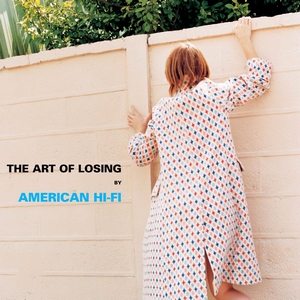
The Art of Losing is the second studio album by American rock band American Hi-Fi. It was released on February 25, 2003, through Island Records. While touring in support of their eponymous debut studio album (2001), the band wrote new songs on their tour bus. They initially recorded for the album at Sunset Sound Studio 2 in Hollywood, California, with producer Nick Launay, before moving to Media Vortex in Burbank, California, and Sage and Sound, in Hollywood of the state. It has been described as pop-punk, power pop, and rock, while received comparisons to the works of Blink-182 and Sum 41.
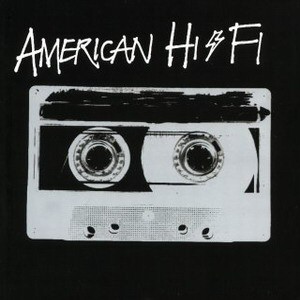
American Hi-Fi is the debut studio album by American rock band American Hi-Fi. It was released on February 27, 2001, by Island Records. Stacy Jones formed American Hi-Fi in 2000; later that year he went to Maui, Hawaii to record drums for Nina Gordon's debut solo album. The rest of American Hi-Fi joined Jones and recorded their debut album with producer Bob Rock at Planation Mixing and Recording. Described as a pop punk and power pop album, American Hi-Fi was compared to Blink-182, Foo Fighters, and Weezer.
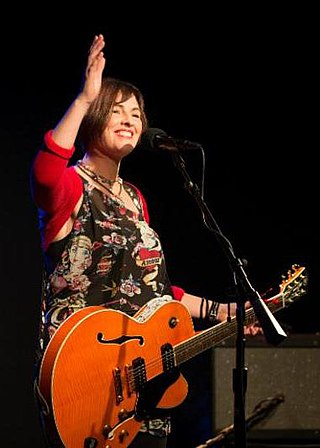
Eleanor McEvoy is an Irish singer-songwriter. She composed the song "Only a Woman's Heart", title track of A Woman's Heart, the best-selling Irish album in Irish history.

Genesis 1976–1982 is a box set of five studio albums by Genesis. It was released on 2 April 2007 in Europe & Japan by Virgin/EMI and on 15 May 2007 in North America by Atlantic/Rhino. The 6-CD/6-DVD box set includes newly remixed versions of the albums A Trick of the Tail, Wind & Wuthering, ...And Then There Were Three..., Duke, and Abacab. The sixth pair of discs includes B-side songs.
High fidelity or hi-fi is most commonly a term for the high-quality reproduction of sound or images.
DIY stands for Do it yourself.
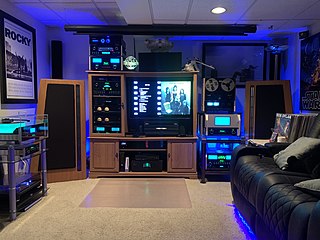
Home audio systems refer to audio consumer electronics designed for home entertainment, such as integrated systems like shelf stereos and music centers, as well as individual components like loudspeakers and surround sound receivers. The evolution of home audio began with Edison's phonograph, transitioning from monaural to stereophonic sound in the 1950s and 60s. The term "hi-fi" emerged, highlighting sound accuracy and minimal distortion. Audio equipment evolved from large wooden cabinets to compact units. The 1970s introduced enhancements like quadraphonic sound and technologies like Dolby Pro Logic. The 1970s and 1980s also saw the rise of component-based stereo systems. Cassette decks became a staple in the 1970s. Integrated systems, termed "music centers" gained popularity in the 1980s. Table systems and compact radio receivers emerged as entertainment devices, with some offering features like cassette players and CD functionalities. Audiophile systems prioritize high-quality music formats and specialized equipment like premium turntables, digital-to-analog converters, and other high-end devices, with some enthusiasts preferring the unique sound characteristics of vinyl records and vacuum tubes. Modern systems often emphasize home cinema applications to enhance the audio experience beyond standard TV speakers.
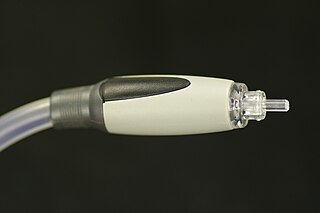
TOSLINK is a standardized optical fiber connector system. Also known generically as optical audio, its most common use is in consumer audio equipment, where it carries a digital audio stream from components such as CD and DVD players, Digital Audio Tape recorders, computers, and modern video game consoles, to an AV receiver that can decode two channels of uncompressed pulse-code modulated (PCM) audio or compressed 5.1/7.1 surround sound such as Dolby Digital or DTS Surround System. Unlike HDMI, TOSLINK does not have the bandwidth to carry the uncompressed versions of Dolby TrueHD, DTS-HD Master Audio, or more than two channels of PCM audio.
Dolby Atmos is a surround sound technology developed by Dolby Laboratories. It expands on existing surround sound systems by adding height channels, allowing sounds to be interpreted as three-dimensional objects with neither horizontal nor vertical limitations. Following the release of Atmos for the cinema market, a variety of consumer technologies have been released under the Atmos brand, using in-ceiling and up-firing speakers.
The Hafler circuit is a passive electronics circuit with the aim of getting derived surround sound or ambiophony from regular stereo recordings without using costly electronics. Such circuits are generally known as matrix decoders. The Dynaquad system works using similar principles.
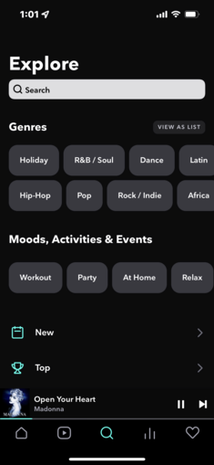
Tidal is a Norwegian-American music streaming service, launched in 2014 by Swedish public company Aspiro. Tidal is now majority-owned by Block, Inc., an American payment processing company that is owned by Jack Dorsey and Jim McKelvey.











